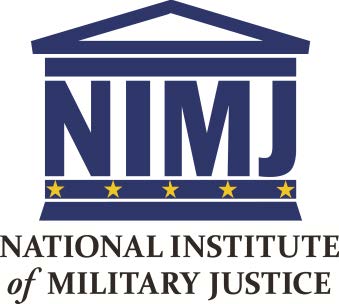|
In Dixon, the Appellant was convicted MJA of one housebreaking and one communicating a threat, and he was sentenced to one year, and a BCD, and a reprimand. Note 4 tell us that the Appellant was also was charged with two sexual assaults which were dismissed w/o prejudice prior to arraignment. He was acquitted of an indecent exposure. 1. At first the Appellant pled G to housebreaking and NG to communicating a threat. The MJ was unhappy with the providency of the housebreaking, so everyone took a break. 2. Appellant entered a plea of G to an LIO of unlawful entry. The court notes the MJ never entered a finding on this offense. 3. The Government elected to prosecute both the housebreaking and communicating a threat. The MJ found Appellant guilty of both. Appellant raises five issues on appeal: (1) whether Appellant’s guilty plea is improvident because unlawful entry is not a lesser-included offense (LIO) of housebreaking; (2) whether the evidence is legally and factually sufficient to support Appellant’s conviction for communicating a threat; (3) whether the evidence is legally and factually sufficient to support Appellant’s conviction for housebreaking; (4) whether the recklessness mens rea for communicating a threat under Manual for Courts-Martial, United States (2016 ed.) (2016 MCM) 5 violates the First Amendment of the United States Constitution; 6 and (5) whether Appellant is entitled to sentence relief because he received nonjudicial punishment under Article 15, UCMJ, 10 U.S.C. § 815, for the same offense for which he was sentenced at trial.7 Because we resolve the first three issues in Appellant's favor and set aside the findings and sentence, we do not reach the remaining issues. Communicating a threat required proof BRD of, (1) Appellant communicated certain language to AG expressing a present determination or an intent to wrongfully injure her reputation, presently or in the future, by alerting MTLs to her violation of AETC dormitory rules. (2) the communication was made known to AG or to a third person. (3) the communication was wrongful. (4) under the circumstances, Appellant’s conduct was prejudicial to good order and discipline. A defense is that the "circumstances reveal that the communication was made “in jest or for an innocent or legitimate purpose” so the communication is not wrongful. See Rapert, 75 M.J. at 169." AFCCA observes that, "In United States v. Whitfield, ARMY 20130212, 2015 CCA LEXIS 184 (A. Ct. Crim. App. 14 Apr. 2015) (unpub. op.) (per curiam), rev. denied, 75 M.J. 32 (C.A.A.F. 2015), the appellant threatened to reveal another soldier’s misconduct to her chain of command. The ACCA found "that “appellant’s threat to truthfully reveal [the victim’s] misconduct to the chain of command falls short of the requirement that appellant’s communication be ‘wrongful."" But see, United States v. White, 62 M.J. 639 (N.M. Ct. Crim. App. 2006), rev. denied, 64 M.J. 225 (C.A.A.F. 2006), which AFCCA distinguishes. Accordingly, AFCCA sets aside the communicating a threat conviction. On to housebreaking. The AFCCA sets aside the housebreaking conviction and holds that unlawful entry is not an LIO of housebreaking because unlawful entry requires the GoD element not found in housebreaking. And, citing Coleman that “[T]he terminal element of an Article 134, UCMJ, offense is not inherently included within other elements and is instead a separate and distinct element that the [G]overnment must prove.” United States v. Coleman, 79 M.J. 100, 104 (C.A.A.F. 2019). Appellant was not charged separately with unlawful entry. Relying on United States v. Nealy, 71 M.J. 73 (C.A.A.F. 2012) and United States v. Girouard, 70 M.J. x, 10 (C.A.A.F. x), the AFCCA finds an accused can't be convicted because " due process “does not permit convicting an accused of an offense with which he has not been charged” and ‘“the Due Process Clause requires the prosecution to prove beyond a reasonable doubt all of the elements included in the definition of the offense of which the defendant is charged’” (citation omitted) (quoting Patterson v. New York, 432 U.S. 197, 210 (1977))." Accordingly, the AFCCA sets aside the unlawful entry plea because a court-martial has no jurisdiction to enter findings for an offense not charged. Judge Key concurs in part and in the result. Judge Key notes that the proper charge was extortion. Keep in mind that even though the AFCCA dismissed the charges with prejudice, the question then becomes, has the Appellant been in jeopardy on the extortion, or for that matter the unlawful entry? Thoughts? Also, Judge Key concludes, in my words, that on the facts of this case the discussion about unlawful entry being an LIO is an advisory opinion and he "do[es] not subscribe to the majority's analysis on this point." Cheers, Phil Cave.
0 Comments
Your comment will be posted after it is approved.
Leave a Reply. |
Disclaimer: Posts are the authors' personal opinions and do not reflect the position of any organization or government agency.
Co-editors:
Phil Cave Brenner Fissell Links
SCOTUS CAAF -Daily Journal -2024 Ops ACCA AFCCA CGCCA NMCCA JRAP JRTP UCMJ Amendments to UCMJ Since 1950 (2024 ed.) Amendments to RCM Since 1984 (2024 ed.) Amendments to MRE Since 1984 (2024 ed.) MCM 2024 MCM 2023 MCM 2019 MCM 2016 MCM 2012 MCM 1995 UMCJ History Global Reform Army Lawyer JAG Reporter Army Crim. L. Deskbook J. App. Prac. & Pro. CAAFlog 1.0 CAAFlog 2.0 Archives
July 2024
Categories
All
|


 RSS Feed
RSS Feed